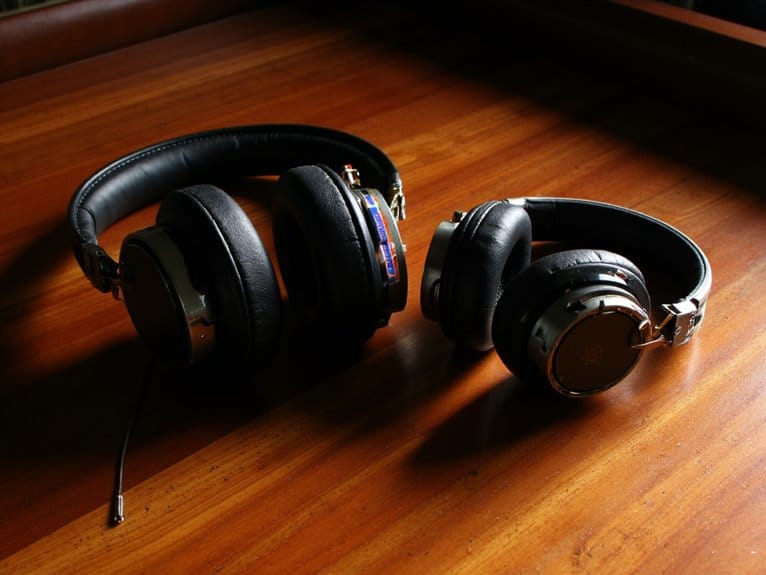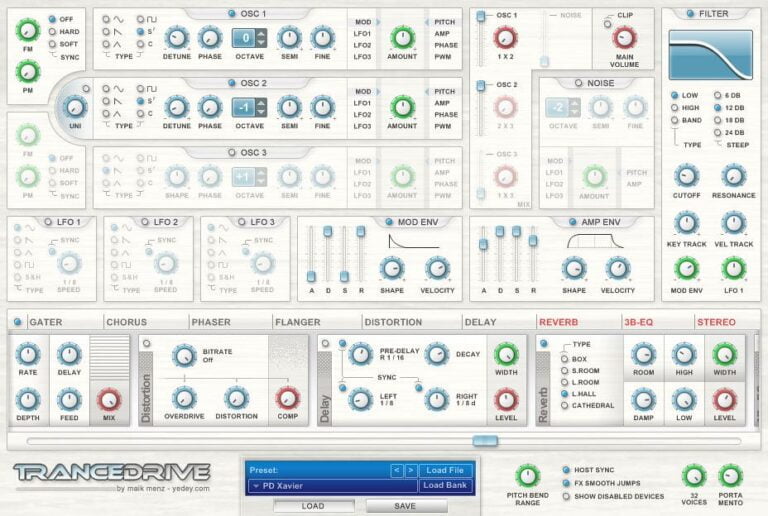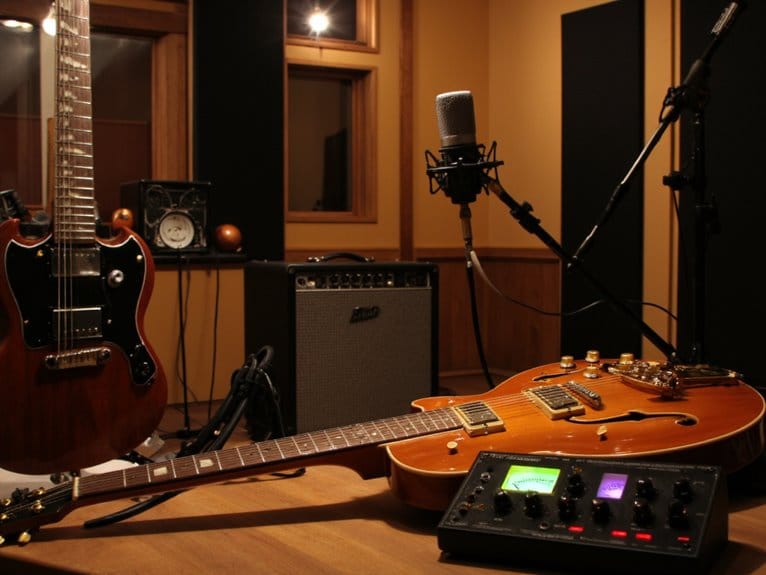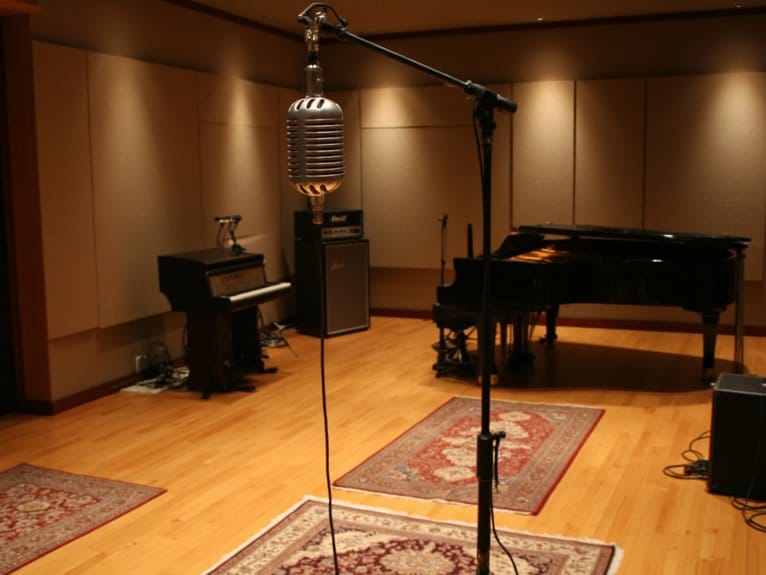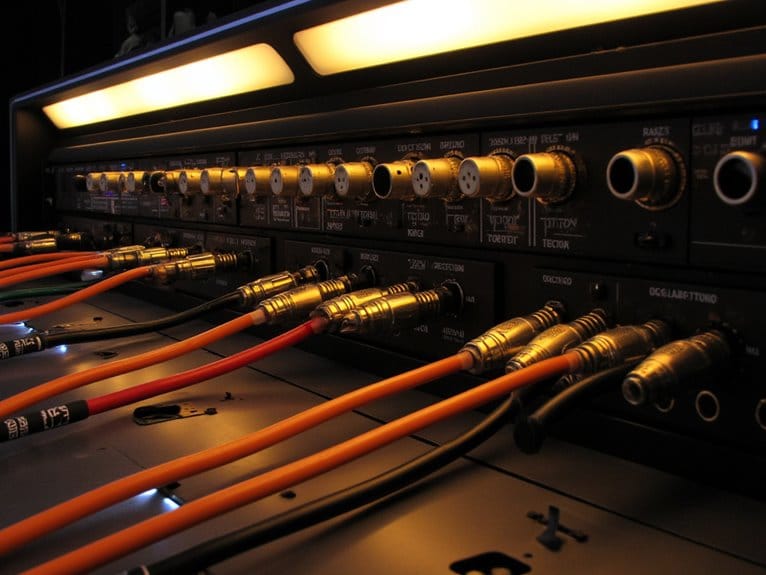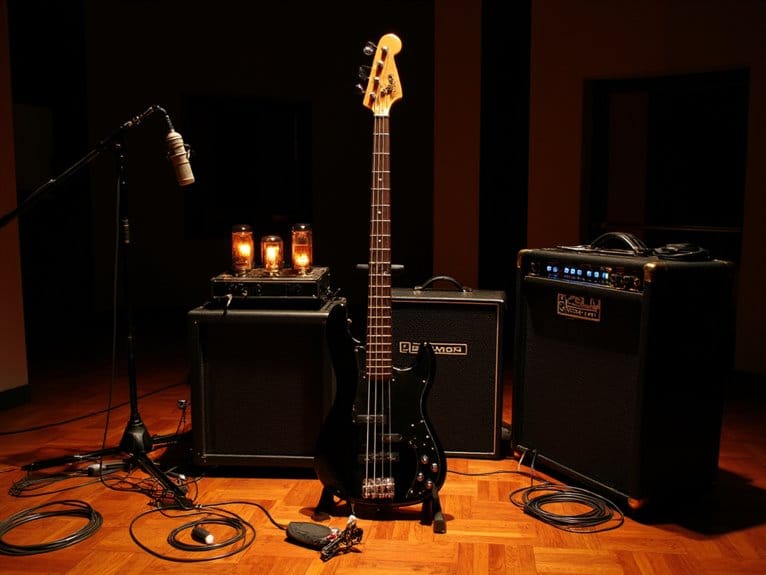What Are Studio Headphones and How Do They Differ From Consumer Headphones
Studio headphones deliver uncolored, flat frequency response that reveals every sonic detail without flattering enhancements, while consumer headphones boost bass and treble to make music sound more exciting. You’ll find studio models prioritize accuracy over enjoyment, using precision-matched drivers and reinforced construction that lasts years of professional use. They’re built for engineers and musicians who need to detect flaws, not casual listeners seeking enhanced entertainment experiences. Understanding these fundamental differences can guide your selection toward the right tool for your specific audio goals.
We are supported by our audience. When you purchase through links on our site, we may earn an affiliate commission, at no extra cost for you. Learn more.
Notable Insights
- Studio headphones deliver flat, neutral frequency response for accurate sound reproduction, while consumer headphones enhance bass and treble for enjoyable listening.
- Professional models use precision-matched drivers and reinforced construction designed for 3-5 years of daily use, exceeding consumer headphone durability standards.
- Studio headphones reveal audio flaws and mixing errors essential for engineers and musicians, contrasting consumer models that prioritize musical enjoyment.
- Price ranges differ significantly: studio headphones cost $150-$5,000+ for professional components, while consumer models range from under $50-$300.
- Target users vary by purpose: studio headphones serve audio professionals requiring uncolored sound, while consumer headphones focus on casual listening.
Understanding the Core Purpose of Studio Headphones
When you’re trying to understand the fundamental difference between studio and consumer headphones, it’s crucial to recognize that studio headphones serve as unforgiving truth-tellers in the audio production process, designed specifically to reveal every sonic detail without the flattering enhancements that make consumer models so appealing to casual listeners.
These professional tools prioritize accurate audio clarity over musical enjoyment, delivering a neutral frequency response that exposes flaws rather than masking them with pleasant colorations. Studio headphones utilize higher quality components that are hand-picked and matched, resulting in superior performance compared to the off-the-shelf parts typically found in consumer models. Models like the Sony MDR7506 exemplify this approach with their flat frequency response that ensures accurate sound reproduction across the entire audible spectrum. Professional studio headphones often feature detachable cables that enhance durability and provide user-replaceable options when components wear out from heavy use.
I’ve found that studio headphones function as critical instruments for engineers and musicians who need to hear distortion, background noise, and mixing errors clearly during recording sessions, enabling precise technical decisions that guarantee your final audio product translates well across all playback systems. Professional studio models typically feature closed-back designs that prevent sound leakage during recording sessions, ensuring that microphones don’t pick up audio bleeding from the headphones.
Build Quality and Construction Standards That Set Them Apart
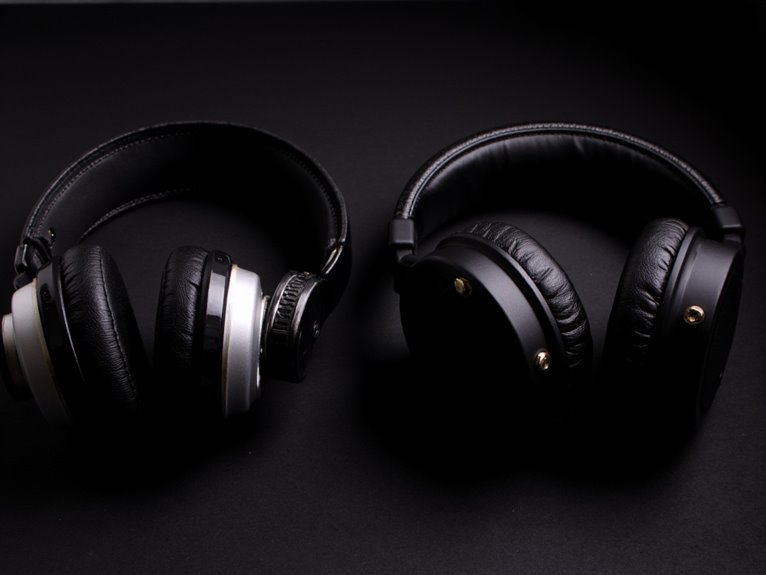
Beyond the sonic characteristics that define studio headphones, the physical construction reveals perhaps the most tangible difference between professional and consumer models.
Studio variants employ precision-matched driver units, reinforced headband assemblies, and heavy-duty cable systems that I’ve watched survive countless late-night mixing sessions where cheaper alternatives would’ve failed.
You’ll notice studio headphones undergo rigorous durability testing, with material selection prioritizing longevity over aesthetics-think thick ear pads, reinforced headbands, and detachable cables with secure 1/4-inch connectors.
While consumer models chase lightweight portability and flashy designs, professional headphones embrace heavier builds that distribute weight evenly, ensuring comfort during those marathon sessions where I’ve forgotten I’m even wearing them.
Professional mixing headphones are engineered to last 3-5 years with daily use before any noticeable degradation occurs, demonstrating the superior construction standards that justify their higher price point. Quality materials like protein leather and memory foam padding are essential components that professional manufacturers integrate into their designs to ensure both comfort and longevity.
Sound Characteristics: Flat Response Vs Enhanced Listening Experience
Though you might expect professional audio gear to sound more impressive than consumer alternatives, studio headphones actually deliver what many listeners initially perceive as underwhelming-a completely flat, neutral frequency response that reveals audio exactly as it was recorded, without the bass boosts, treble enhancements, or sonic coloration that make consumer headphones sound immediately exciting.
| Feature | Studio Headphones | Consumer Headphones |
|---|---|---|
| Frequency Response | Flat, neutral | Enhanced, colored |
| Bass Profile | Accurate reproduction | Often boosted |
| Treble Character | Unaltered highs | Potentially enhanced |
| Dynamic Range | Full spectrum | Sometimes compressed |
| Audio Purpose | Critical listening | Entertainment focus |
This frequency fidelity allows professionals to identify imperfections and make accurate mixing decisions, while tonal coloration in consumer models prioritizes immediate enjoyment over technical precision. Professional models like the Sennheiser HD 280 Pro and Sony MDR7506 exemplify this approach through their flat frequency response design, which minimizes artificial enhancements to deliver the uncompromising sound fidelity that audio engineers require.
Choosing the Right Headphones for Your Specific Needs
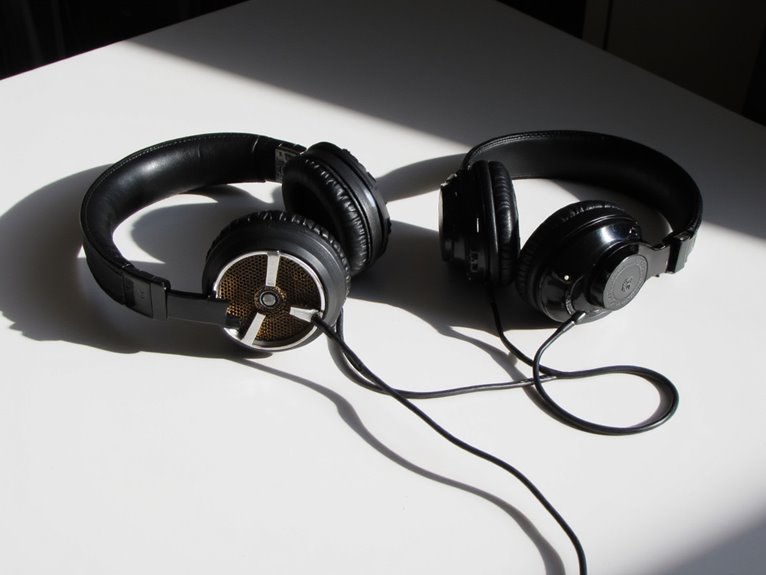
When you’re standing at the crossroads between studio and consumer headphones, I’ve found that three critical factors will guide you toward the right choice for your specific situation.
Your audio goals, whether they involve critical listening for professional work or casual entertainment, should drive your decision-making process, followed closely by budget constraints and the build quality you’ll need for your intended usage patterns.
The features you prioritize-from sound accuracy and isolation to wireless connectivity and comfort-will ultimately determine which type of headphones aligns best with your needs, lifestyle, and long-term satisfaction.
Assess Your Audio Goals
Why do so many people struggle to choose between studio and consumer headphones? The answer lies in misaligned expectations between their audio preferences and actual requirements, creating confusion that I’ve witnessed countless times in my years reviewing audio equipment.
Before investing in headphones, you’ll need to honestly evaluate what you’re trying to accomplish, because different music genres and listening contexts demand vastly different approaches to sound reproduction.
Here’s how to assess your specific audio goals:
- Professional work requires accurate, uncolored sound reproduction for detecting flaws.
- Casual listening prioritizes pleasurable sound with enhanced bass or warmth.
- Critical listening demands wide frequency range and higher fidelity capabilities.
- Gaming sessions benefit from spatial audio and extended comfort features.
Understanding these distinctions prevents costly mismatches between your expectations and headphone performance.
Budget and Build Considerations
Since your audio goals are now crystal clear, the financial reality check becomes unavoidable, and I’ve learned that budget decisions in this space aren’t as straightforward as they initially appear.
Studio headphones demand higher upfront investment due to professional-grade components, rugged construction designed for demanding environments, and superior build quality that withstands heavy use.
Consumer models offer wider price ranges with affordable options, though they often prioritize aesthetics over durability.
While studio headphones require minimal headphone maintenance thanks to their robust engineering, they provide exceptional sound isolation and accurate frequency response that justifies the cost for professionals.
Consumer headphones frequently include convenience features like wireless connectivity, but high-end studio models consistently deliver better frequency range and construction quality at similar price points, making long-term value proposition compelling.
Feature Priority Assessment
Three fundamental categories define every headphone purchase decision, and I’ve discovered that understanding your specific priorities within each determines whether studio or consumer models better serve your needs.
Your feature priorities should align with these assessment criteria:
- Sound accuracy requirements – Studio headphones deliver neutral, uncolored audio for critical listening, while consumer models enhance bass and treble for entertainment value.
- Convenience features – Consumer headphones offer wireless integration and active noise cancellation, whereas studio models prioritize wired reliability and passive isolation.
- Usage duration expectations – Professional models emphasize comfort during extended sessions with padded ear cups, while consumer designs balance portability with casual listening comfort.
- Technical compatibility – Studio headphones feature higher impedance for professional interfaces, consumer models optimize for smartphones and portable devices.
Honestly, matching these priorities to your actual needs prevents costly misalignment.
Frequently Asked Questions
Do Studio Headphones Require Special Amplifiers or Audio Interfaces to Work?
You don’t absolutely need special equipment, but studio headphones have specific amplifier requirements for maximum performance. Audio interface compatibility guarantees proper power delivery and sound quality that regular consumer devices can’t provide effectively.
Can Consumer Headphones Ever Replace Studio Headphones for Music Production?
Consumer headphones can’t replace studio headphones for music production because you’ll miss critical audio flaws. You need studio fidelity and sound accuracy to make professional mixing decisions that consumer models simply don’t provide.
On a final note
When you’re deciding between studio and consumer headphones, you’ll need to evaluate your primary use case, budget constraints, and listening preferences. If you’re mixing audio, producing music, or need accurate sound reproduction, studio headphones are worth the investment. However, if you’re just enjoying music casually, consumer headphones with their enhanced bass and comfortable fit might suit you better for everyday listening.

